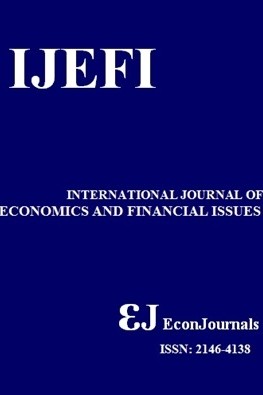A Dynamic Model Approach of Securitization and the Financial Crisis
A Dynamic Model Approach of Securitization and the Financial Crisis
Assets, Credit, Derivatives, Dynamic, Static Credit Risk,
- Başlangıç: 2011
- Yayıncı: İlhan ÖZTÜRK
Profitability and Cost Efficiency of Islamic Banks: A Panel Analysis of Some Selected Countries
Sirajo ALİYU, Rosylin Mohd YUSOF
Assessment of the Level of Economic Security in the Conditions of Uncertainty
Anna V. ORLOVA, Julia V. LYSHCHİKOVA, Yevgenia V. NİKULİNA, Yevgeny İ. ANOKHİN
Determinants of External Debt in Thailand and The Philippines
Human Capital, Institutions and Innovation in Sub-Saharan Africa
Stephen Oluwatobi, Oluyomi Ola-David, Isaiah Olurinola, Philip Alege, Adeyemi Ogundipe
Wajih Abbasi, Petr Hájek, Diana Ismailova, Saira Yessimzhanova, Zouhaier Ben Khelifa, Kholnazar Amonov
Random or Deterministic? Evidence from Indian Stock Market
İvani BORA, Naliniprava TRİPATHY
Sallahuddin HASSAN, Musa MURTALA
Comparative Study on Performance of Islamic Banks and Conventional Banks: Evidence from Oman
Zaroug Osman BİLAL, Omar Mohammad DURRAH, Tariq Mohamed ATİYA
Nessrine Hamzaoui, Boutheina Regaieg
Board Characteristics and Sustainability Reporting: Environmental Agencies’ Moderating Effects
